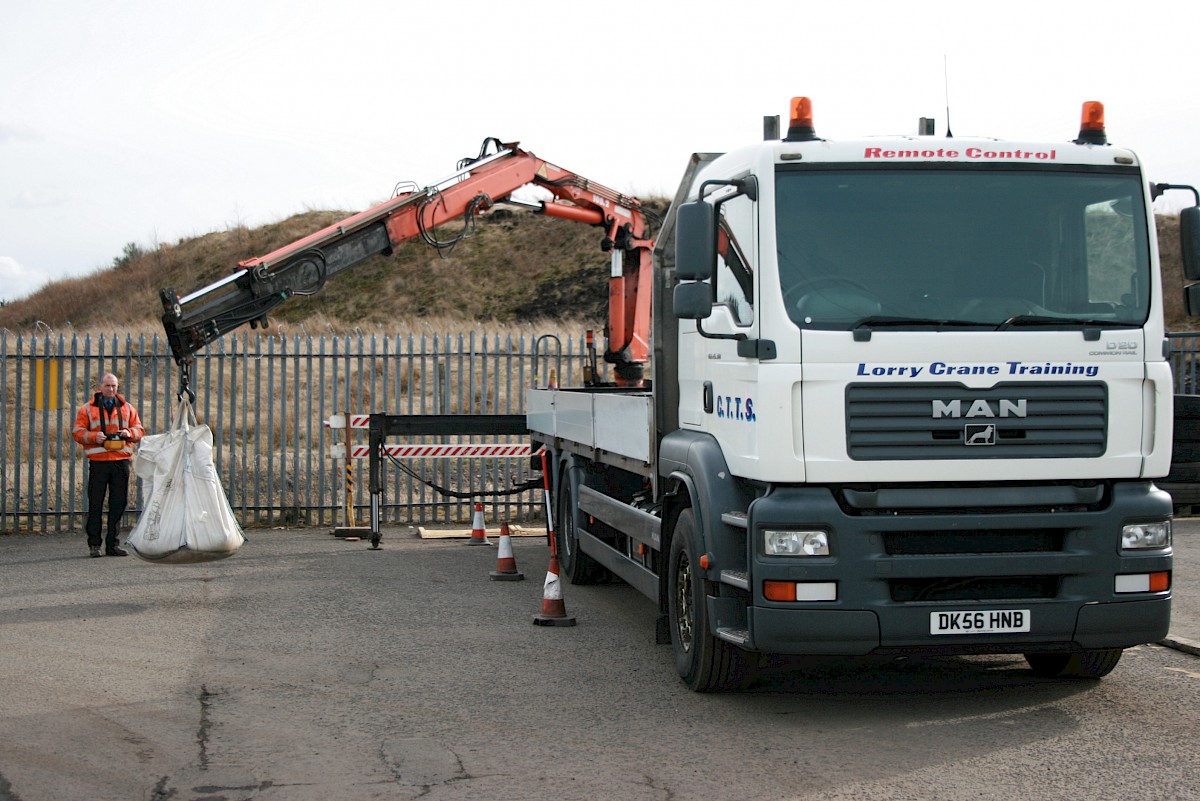HIAB
REMOTE CONTROL Lorry Mounted Crane Operator Courses
CTTS conduct lorry mounted crane courses at their premises in Bathgate. The crane that we use is a fully remote controlled rear mounted 5 ton Atlas with stabilizing outriggers. The training however can be conducted at the customers premises utilizing the client’s equipment if that is required. The training is conducted by experienced/qualified instructors with the final course tests being conducted by the senior instructor.
There are two courses available:
Refresher Training (1 day course)
This course is for operators who are required to re-qualify. This course involves theory and practical training and on successful completion will result in the operator being certified by the examiner. Including where applicable upgrading to remote cranes.
Basic Training (3 day course)
This course will enable an operator with no crane experience to progress through the course and on successfully passing the tests qualify them as a Remote lorry mounted crane operator certified by the examiner. The course involves both practical and theory training. They will receive training on the Safe working Practices applicable to crane operations and sufficient practical training to ensure the operator is conversant and comfortable with the operating of the machines in a work environment.
On our premises we use different lifting tackle including slings, chains and shackles to lift and position the various loads available. The emphasize of assessing the load and the factors involved with a safe lift are highlighted and practiced on a wide and varied selection of loads. These loads include 1000ltr liquid containers both empty and 1/2 full, this demonstrates the effect of a surging loads on stability and control. Truck axles with only one wheel fitted to demonstrate the importance of correctly positioned lifting chains. Other loads include bags of sand, pipes and the most challenging of all, the lifting of a cement drum taken from a cement mixer lorry. We also cover the positioning and securing of the load on the vehicle.
We encourage the trainees to assess the load and think the lift through before the lift commences. We present the candidates with challenging lifts in order to reinforce the importance of safe working practices. We address any mistakes or unsafe practices here in the training environment to ensure that the successful candidates are not only confident but competent.
The certificate can also be issued to the company stating that the employee is certified to operate their machines, on their behalf as part of his/her employment. This means that the company is the holder of the certificate and not the individual.


